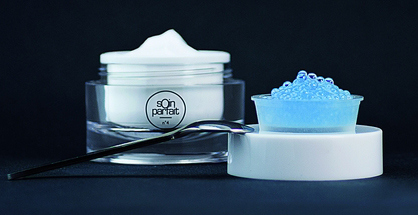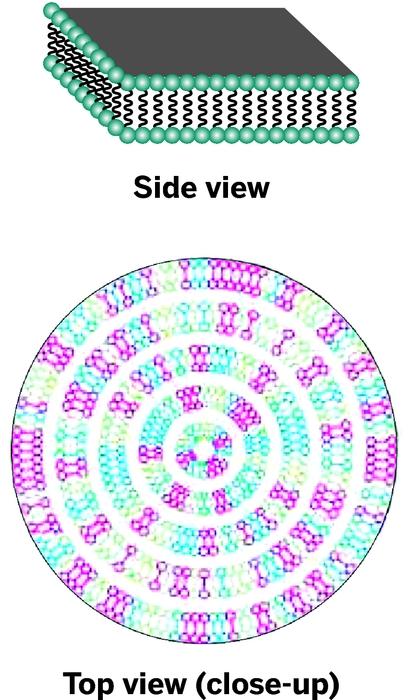Enhanced cosmetics
May 18, 2012

Alginate-based "pearls" containing antiaging ingredients are mixed into an activating cream in three layers, including 20- to 200-nm nanoemulsions to encapsulate lipophilic actives (credit: Capsum)
Growing demand for “enhanced cosmetics” is fostering research on micro-capsules and other technology to package those ingredients in creams, lotions and other products to take advantage of a global market valued at $425 billion in 2011.
To meet that demand, chemical companies are looking for better ways to encapsulate these additives — which can reduce inflammation, repair hair or prevent wrinkles — to stop them from breaking down in the bottle or help deliver them to the skin and hair more effectively.

A surfactant concentrated in the lamellar phase and engineered to form an onionlike vehicle has voids that can encapsulate and deliver active ingredients to skin and hair (credit: Rhodia)
Active ingredient delivery systems are already incorporated into 10 to 20 percent of cosmetics on the market today, a number predicted to grow to 35 or 45 percent in five years.
Cosmetics makers are adopting novel delivery systems for skin using a variety of micelles, vesicles, surfactants, and polymers, but they don’t often reveal those details to the public. Exceptions include:
- Air Products & Chemicals has adapted an insulin sugar delivery system to make better sunscreen.
- Microcapsules help coat the skin with protective ingredients, while another capsule system carries vitamins C and E beneath the skin as a second line of defense.
- Rovi’s Dermoprotectyl, a skin care ingredient, that combines two systems for delivering actives has two systems. One, based on inulin sugar nanoscale vesicles, places sunscreen ingredients on the surface of the skin. A second system, using lipid protective spheres, deposits vitamins E and C just below the surface of the skin for a second line of defense against sun-induced damage.
- A product from Evonik Industries uses water droplets coated in silica to make a “dry water.” When combined with a powder containing fragrances or vitamins and rubbed on skin or in hair, the water is released to form a cream that delivers the ingredients.
Ref.: Marc S. Reisch, Enhancing Cosmetics, Chemical & Engineering News, 2012 (open access)